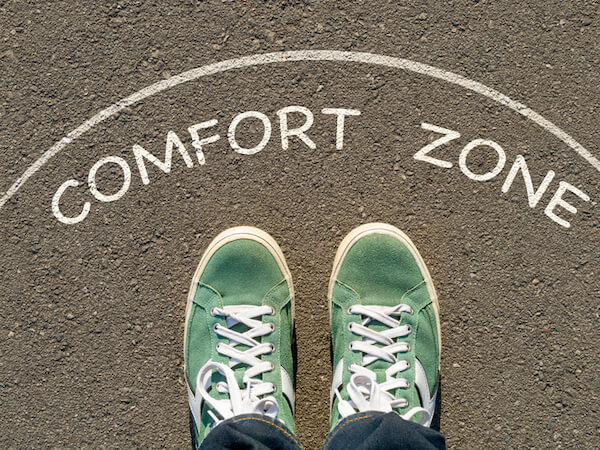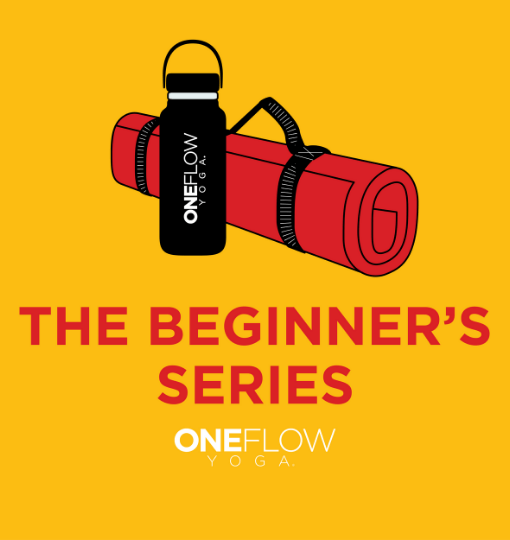People ask, “Is vinyasa yoga hard” because they want to know if they’ll be able to do it.
Vinyasa isn’t more difficult than any other type of yoga if you choose a class based on your ability and level of fitness. Jump into a random vinyasa class without much yoga experience, and it can be very hard. However, there are steps you can take to adjust the difficulty of the class.
If you are new to vinyasa yoga, there are a few strategies that will allow you to do the class while building strength, flexibility, and endurance. And there is a big reason why you want your practice to be a little bit challenging.
What Can Be Hard About Vinyasa Yoga
Are you going to be able to do vinyasa yoga? Yes, but the answer depends on several factors, including your general fitness level, the classes you choose to take, and whom you learn from.
General Fitness As A Factor In Difficulty
People who regularly work out and move their bodies will have an easier time adjusting to yoga’s physical demands. But they’ll still want to start with a more beginner-friendly class because yoga is a skill and because your body gets strong depending on how you use it.
For instance, I came to yoga with a background in soccer and running, two leg-focused activities. The standing postures were a lot easier for me compared to anything that involved my upper body, where I tended to be weaker.
Because vinyasa yoga is a full-body exercise, it will often challenge you to move and stretch in ways your current activities do not.
Choose the Right Yoga Class To Make it More Accessible
You can set yourself up for success by choosing a class designated as Level 1 or beginner-friendly.
Most yoga studios and online yoga classes use a 3 level system.
| Level | Best For | Description |
| Level 1 | Beginner | Slower Paced. Simpler entrances & exits. Strength & Skill Building |
| Level 2 | Proficient | Familiar with Surya Namaskar A & B. Willing & able to take care of themselves. |
| Level 3 | Skilled | Able to move fluidly. Approach the practice as more than the physical. Often the students that take care of themselves the most. |
The levels help yoga students know which class is going to be appropriate for them. Unfortunately, there’s no national standard for levels, and they are highly dependent on a particular studio. They can only be considered rules of thumb.
It’s truly up to the skill of the teacher as to how difficult a class is. Because another way to think about “is vinyasa yoga hard” is, “is it accessible.”
At One Flow Yoga, we like to say the class is “simple but not easy,” which means it will be challenging, and you’ll be able to do it. Again, this is not true universally, with some places choosing to slow down their Level 2 class to make it Level 1.
In my experience, this is a missed opportunity, for a Level 1 class is a different kind of entity. Ideally, it’s a place you’ll build strength, flexibility, and skill, and knowledge of what yoga is about.
You’ll notice there’s no word “advanced” in the levels because you can actually practice in a very skilled way no matter what level you are doing. I know many students who choose to practice at Level 1, even though they’ve been doing yoga for ten years and are very skilled. They prefer the pace and simplicity of the Level 1 practice.
If you want to read more about advanced yoga click here.
What Do We Mean By Hard
The hardest thing about yoga is showing up. If you’ve made it through the studio doors or logged onto your online class platform to practice, you’ve done the most challenging thing.
Yogins, historically, have been known to do hard things. The Sanskrit word is acharya, which means to become skilled.
And to become skilled, you have to show up repeatedly.
But yoga isn’t just demanding of you physically, but mentally and emotionally too.
What’s Hard About Vinyasa Yoga
Holding yoga poses. A yoga pose is typically held for 5 breaths in vinyasa. As a comparison, think about holding a barbell in a fixed position for 5 breaths. The better you become at yoga, the more difficult you can make it because you’ll know how to engage your musculature.
Sequences. Sequences are two or more postures put together. A sequence that targets the same muscle group can be challenging because the clock gets extended on the particular muscle group working.
Building strength. We tend to be weak in some parts of our bodies when we start practicing yoga. You become stronger, physically, through overloading the muscles, which stimulates them and causes them to develop. And to overload the muscles, you’re going to have to do hard things.
Developing flexibility. Likewise, to extend your range of motion, it’s going to take consistent, hard work.
The Pace. The pace, or how quickly or slowly you move, requires effort. Fast-paced classes ask you to keep going, while slow movements demand more strength.
Listening. Listening is a skill you develop and is fundamental to yoga. Yoga is about paying attention, which requires listening. First, learn to listen to the cues the teacher is offering, then over time your breath, and finally to what you are thinking and feeling.

Why You Want Vinyasa Yoga to Be Challenging
You want your yoga practice to be hard because this is where the work of yoga comes up.
When yoga is hard, you can:
- Learn to pay attention
- Build strength
- Develop the tools such as breath
- Process things
Just like muscles grow when stimulated, challenging the breath with difficulty makes it more reliable. This is not an article about breath. For that, you can click here. However, we try to breathe in a steady and relaxed way in vinyasa. That’s easily accomplished in quiet moments when there’s not much challenging you.
But ramp up the practice’s difficulty, and suddenly it takes a lot more work to keep the breath calm and fluid. As yoga practitioners, we learn to do this because it’s a tool we can use in everyday life when the challenges and stress are mounting. If you can breathe in a rhythmic, even way, it will relax you, and that will make it easier to face life.
A unique attribute that makes yoga, yoga, is our ability to process or deal with things. I mentioned I was a runner. When I ran, I often felt great afterward. It felt good to move, and my mind felt clearer. However, I didn’t really change my perspective or way of thinking.
It wasn’t until I started practicing yoga that I learned to listen and pay attention. And when I did, many things came up that I needed to work through.
This is the part of yoga that people talk about when they say, “yoga changed my life.” Paying attention and listening so you can process takes work and is so worthwhile.
How Hard Should Vinyasa Yoga Be?
Yoga means to engage, participate and get involved. It’s a call to you to live life.
But that often cannot happen if yoga is too easy.
Seek a place in your practice where you feel comfortable discomfort.
It’s another beautiful yoga paradox, that you can get used to, and even enjoy, the feeling of discomfort. And discomfort is where we grow. It’s where change happens.
As a teacher, I strive to make class one degree harder than you can currently do.
That’s an important distinction because if the yoga is too easy, you’ll be bored. If yoga is too hard, you might quit or revert to the way you usually do things.
Believe it or not, that’s very challenging for a yoga teacher to do, but it makes sense. After all, those who tend to become yoga teachers are kind and sensitive people. So then you’re asking this group of people to offer something challenging, it can make them uncomfortable. It’s the same for parents.
One of the most difficult things for a parent to do is watch their kids, the people they love more than anything, go through a challenge. Any parent would readily switch places with their struggling child. Yet, they know that is how they grow. So they hold back, encourage, support, and give the child space to do their work.
The Power of Discomfort
Get discomfort just right, where it still is comfortable, and you can do powerful things. Yoga is trying to learn another way to address the trials life has to offer.
There’s an art to making class just hard enough as a teacher because you have to pay attention, or what we call “being present.” It also takes skill to teach in a way that is both accessible and challenging.
The crazy thing is that many yoga classes are not difficult enough, meaning there’s not much work to do.
Of course, a teacher can go overboard and make things impossible. I don’t subscribe to the idea of making a class difficult just for kicks. It has to have a purpose and be a place to do the physical, mental, and emotional work of yoga.
How To Adjust How Difficult Yoga Is
Whatever your current level of yoga is from novice to skilled, knowing how to change a class’s difficulty will serve you well.
Here are the top 5 ways to adjust the practice.
1–Choose the right class for you. Begin with Level 1 or Beginner Friendly Classes
2–The difficulty is select-a-size. Like paper towels, you can choose how much to do or not do. If something isn’t working for you, you can always skip it.
3–Be a river. A class ebbs and flows like a river. Not every moment has to be scary rapids that require tremendous effort. Choose your moments to work hard and then float for a while.
4–Take breaks, like in child’s pose. Different from skipping postures is resting. When you listen to your body, you may decide that what you need most at the moment is to pause and breathe.
5–Be aware of fatigue. When you fatigue in yoga, your body can start to shake. This is because the muscle fibers are trying to cycle the work, but it’s not as smooth as when you’re rested. Scientific American has a good explanation of this phenomenon.
Fatigue is problematic when you don’t back off. Your form suffers and you are prone to overdoing it.
And remember, the main factor on whether to make a class hard or not is do you feel safe. If safety is not there, it’s tough to grow. Here it makes sense to use your intuition.
Questions to Ask Yourself
- Is the teacher paying attention and responding to the class?
- Does the teacher seem to have your best interest at heart?
- Does the teacher teach step-by-step?
- If the class is difficult, does the teacher speak to that?



